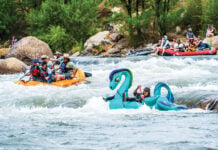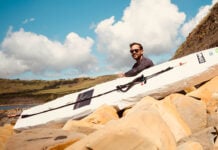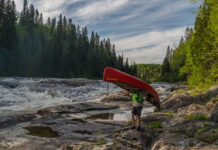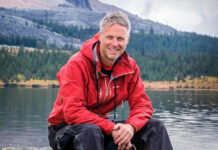Every spring brings new expeditions of paddlers who set out to seek adventure by crossing vast distances. As impressive as they are, these trips can be unrelatable for many canoeists. Ryan Morin is nearing the end of a more relatable quest inspired by the accessible beauty of Algonquin backcountry canoeing. This might be the year he finishes canoeing on each of Algonquin Provincial Park’s 630 portage-accessible lakes.
How many lakes in Algonquin Park?
Algonquin Provincial Park, located in south-central Ontario, is larger than the state of Delaware. Nearly half of its roughly 1,300 lakes can be reached by paddle and portage from one of the park’s 29 road access points.
The number itself is hard to fathom, but most of the 455-odd lakes visited by Morin so far have been bagged during the type of weekend outings not too different from those taken by your typical, well-adjusted canoeist with a job.
Bitten by the exploration bug
Morin didn’t start down this tallying trail deliberately. “Visiting all these lakes was something I wanted to do, well before I ever thought of putting a name to it,” says the 30-year-old ecologist.
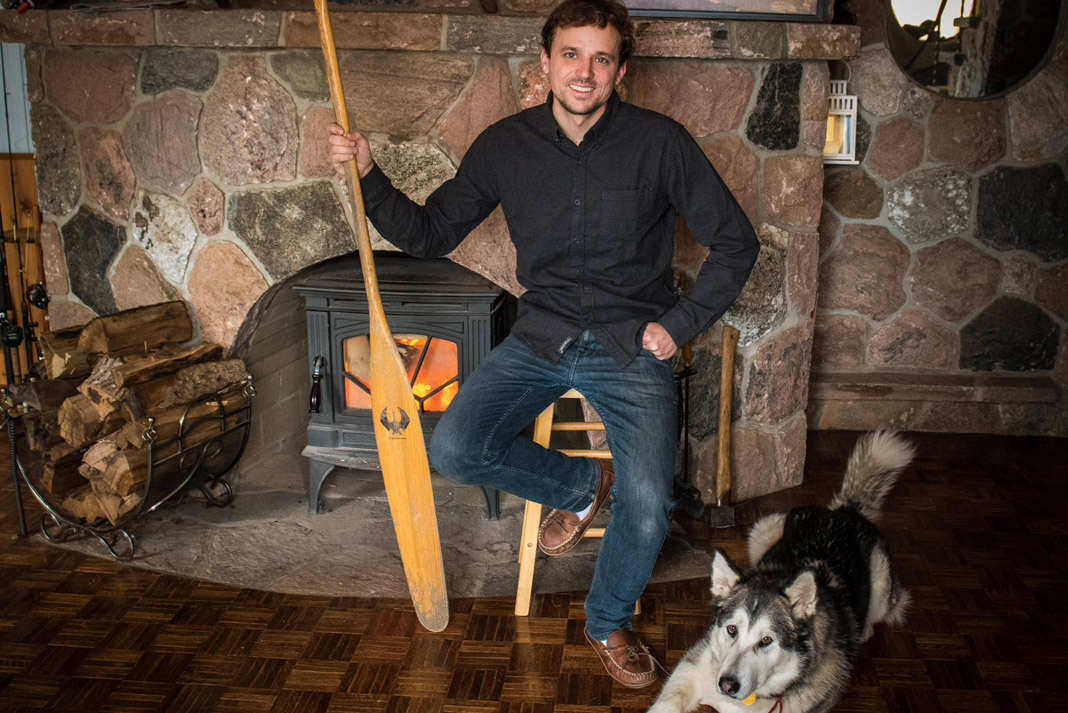
He grew up 250 kilometers south of the park, in suburban Toronto, and didn’t visit Algonquin until he was 20 years old. “I was shocked,” he says. “I couldn’t believe there was country like this so close to home. I said to myself, ‘I have to work here.’”
Morin got a job at an outfitting company in the park and started exploring. He uses the website Algonquin 875 to document his progress.
A culture of adventure
“The culture at the Portage Store was competitively adventurous,” he remembers. “We were always asking each other, ‘Who can go farther on two days off?’”
“I found the place so fascinating. It was pure passion for me. I wanted to see the next lake, and then the next lake.” Morin’s friends suggested that he would run out of lakes to explore. Now in his seventh season of Algonquin backcountry canoeing, he is a few months away from proving them right.
I couldn’t believe there was country like this so close to home.
I said to myself, ‘I have to work here.’
X marks the spot
At his home in Dorset, a 20-minute drive from the park’s southwest boundary, Morin has a tattered map. It’s the same kind used by most of the hundreds of thousands of canoeists who visit Algonquin each year. But this one has small black X marks on most of the lakes marked with portages.
Blue icons mark the portage-accessible lakes Ryan Morin has visited, while red icons mark those he has yet to explore. | Google Map: Ryan Morin, Algonquin 875
Morin admits he doesn’t know the exact number of X marks he has tallied. It’s not an object of obsession for him. “Maybe one day I’ll get it framed so I can look at it from my rocking chair,” he says.
Morin’s method of backcountry canoeing
There is nothing extraordinary about his method. He does long days, sometimes up to 50 kilometers, but generally short trips. And he isn’t obsessive about weight. “My pack is on the heavy side,” he says. “I like to bring good food.”
Yet, Morin admits to a shift in thinking from those days of exploring simply for exploring’s sake—and, more importantly, going Algonquin backcountry canoeing just to fish for trout. “Sometimes now before I go out, I ask myself, ‘Why am I doing this?’ I know a great spot nearby, where I could be alone with lots of fish, instead of driving for two hours to a bog just to cross it off.”
“But I go,” he says. “And every Sunday I come back and have learned or discovered something new.”
Canoeing in Algonquin is simply Devine
One of the stand-out places is Devine Lake, six portages down the Tiny Tim River. Morin says it used to be called Camp Lake, because there’s an island on it almost hollowed out, so the middle seems to be lower than lake level. He says the rumor is that poachers used to hide their camps in there, where no one could see them.
The night Morin spent on Devine Lake was less nefarious, but did involve “a couple of great friends, quite a few drinks, a fire and a burnt pair of expensive hiking pants.” Now that’s an expedition most canoeists can relate to.
New horizons and new goals
At 453 meters of elevation, Morin says Devine is one of the higher lakes in Algonquin, but does receive water from Saw Whet Lake, another kilometer upstream along an impassable creek. There is no portage into Saw Whet, so it doesn’t count toward his goal. Nonetheless, Morin often finds himself in supposedly inaccessible lakes during his Algonquin backcountry canoeing trips, “Just to see what they are like.” He estimates he’s been to about 30 or 40, but he isn’t counting—yet.
This article was first published in Issue 53 of Paddling Magazine. Subscribe to Paddling Magazine’s print and digital editions, or browse the archives.
Follow along as Ryan Morin continues his quest at morinryanj.wixsite.com/algonquin875.



